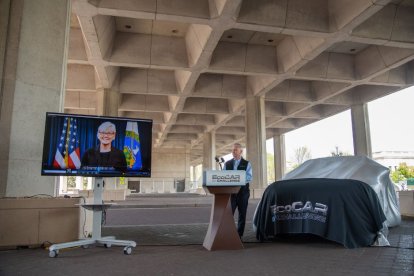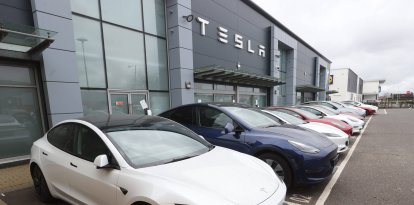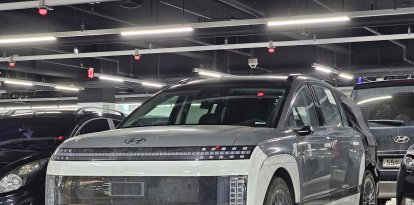Jennifer Granholm's trip to show the benefits of electric vehicles reveals the cars' shortcomings
The secretary of energy's four-day journey aboard an electric vehicle highlighted the lack of charging stations, slow charging times and unreliability.

(US Department of Energy/Flickr)
The U.S. secretary of energy took a trip aboard an electric vehicle (EV) to show off the investment the Biden administration is making in clean energy, but it did not go exactly as she expected. Despite the fact that the members of the EV caravan that accompanied Jennifer Granholm knew it wouldn't be a bed of roses, the four-day journey from Charlotte, N.C., to Memphis, Tenn., brought to light several of the big problems that EVs currently present.
A call to the police
In her excitement about EVs, Granholm compared the impact these cars will have to that of combustion cars on the horse and carriage. However, during this four-day trip, the caravan members experienced the main problems of electric cars firsthand. First of all, there are not enough chargers. The secretary's entourage encountered a fast charging point with four spots, however one was broken and two were occupied. When a member of the convoy attempted to block one of the available charging points with a combustion vehicle to hold it for the secretary, the police were called by a family with a baby who had to sit in extreme heat as they waited to charge their EV.
When the police arrived, however, the officers could not do anything since in Georgia it is not illegal for a combustion vehicle to claim an EV charging point. The secretary's staff managed to calm tempers by sending cars from the caravan to slower chargers, making room for the family and Granholm.
The problems with electric vehicles in the U.S.
The lack of space was not the only issue the secretary encounterd. NPR reporter Camila Domonoske, who traveled with Granholm to see the situation firsthand, notes that existing chargers are not fast enough. The fastest chargers allow the vehicle to be recharged in about 20 minutes (and only the most modern cars), while there are still chargers take more than an hour. To encourage fast chargers, the administration is only subsidizing charging points of 150 kilowatts or more.
The third challenge is making sure the charging points actually work. In theory, this issue so not be so common, as another of the government's requirements for providing aid is that the chargers "work at least 97% of the time." On her trip, Granholm found charging points with broken screens, chargers that supplied electricity at a third of the promised speed and even some that left cars not fully charged. According to a J.D. Power study on charging station trust, only 22% of citizens in five states consider public charging points reliable.
For all of these reasons, trips using electric vehicles can be quite cumbersome. Compared to gas stations, which are easy to find, traveling with an electric car requires hours of planning to assure there fast charging points along the way and hotels that allow vehicles to recharge. Also, travelers with EVs are recommended to look at updated reviews to make sure that charging stations they plan to use are completely functional and available.
RECOMMENDATION





















